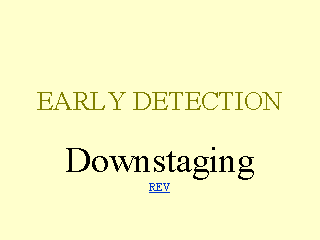Search inside of Supercourse and lectures in HTML and PPT format
 |
|

|
front |1 |2 |3 |4 |5 |6 |7 |8 |9 |10 |11 |12 |13 |14 |15 |16 |17 |18 |19 |20 |21 |22 |23 |24 |25 |26 |27 |28 |29 |30 |31 |review |
 In developing countries cancer is diagnosed late when it is incurable. More than 80% of cases are diagnosed in advanced stages III and IV that have a 5-year survival of less than 20%. If through education there is an increased awareness among physicians, health care workers and the general public that cancer can be cured if found early and prompt, effective therapy is available, then more and more cases will be diagnosed earlier. Eventually more than 80% of cases will be diagnosed early at stages I and II where there is a good 80% 5-year survival. This is the pattern seen in a developed country. The phenomenon is called “downstaging” because new cases are diagnosed at an earlier stage (staged down from III/IV to I/II). The phenomenon can be measured as one of the indicators of the effectiveness of screening programs. Early diagnosis and treatment of cancers has a far greater impact than trying to treat the disease in its advanced stage. Along with the education programming for both health care workers and the public, primary care workers can be trained to detect certain cancers early and refer them for diagnosis and treatment in countries where formal population screening programs are unavailable. At a population level this approach is applicable most to cervical, oral and skin cancers. |